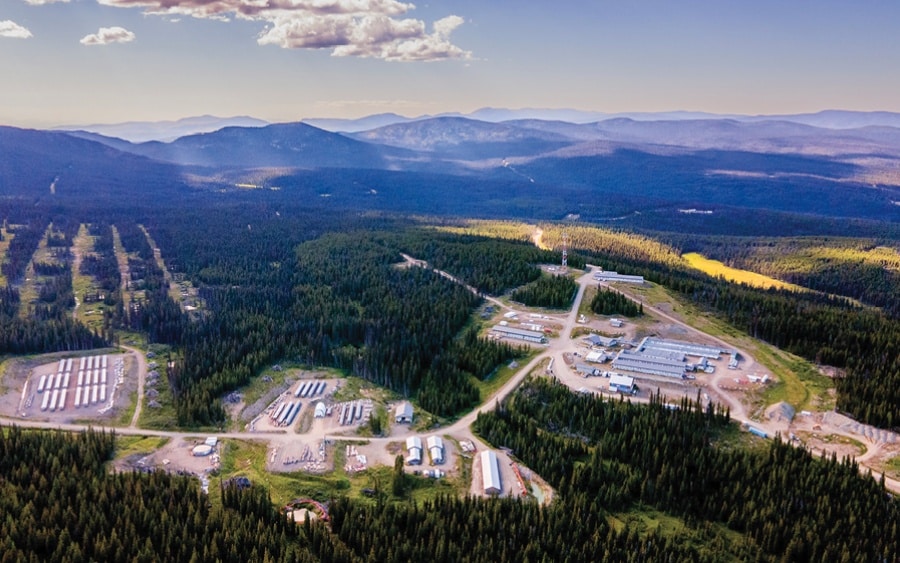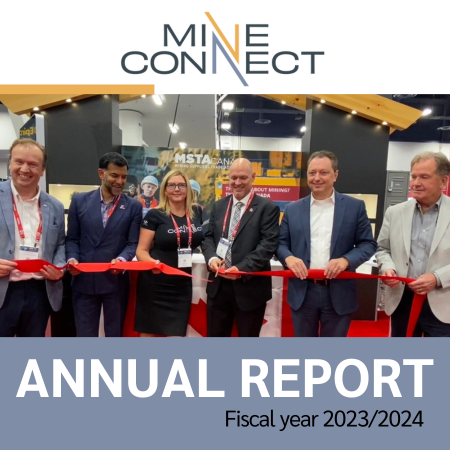Tucked away in central British Columbia, the Blackwater gold project is the focus of intense activity 112 km southwest of Vanderhoof. Artemis Gold is prepared to spend $645 million to bring the mine into production, with the first gold pour planned for the third quarter of 2024.
Not only will this be the next major gold mine in the province, but it is also hailed by Artemis president and COO Jeremy Langford as one of the most exciting large scale, open pit gold developments in Canada. The plan is to produce an average of more than 300,000 oz. of gold in five years of operation.
There is every expectation that Langford and his team will succeed. This is the team that successfully developed Atlantic Gold in Nova Scotia, then sold it to Australian miner St Barbara in 2019. Their track record speaks for itself.
In 2020, Artemis paid $190 million for Blackwater in cash ($140 million in August 2020 and $50 million in August 2021), issued $20 million in Artemis shares, and gave New Gold an 8% stream on the future gold production from Blackwater (with ongoing payments of 35% of the spot gold price). At that time, New Gold estimated that it had invested roughly $365 million in drilling, engineering, camp development, and permitting the project.
Between acquiring the project and the end of September 2022, Artemis has spent an additional $76.6 million on site preparation and equipment.
The prize is a disseminated gold-silver mineralization containing 8.0 million oz. of gold and 62.2 million oz. of silver in proven and probable reserves. The reserves are 334.3 million tonnes grading 0.75 g/t gold and 5.8 g/t silver, or 0.78 g/t gold-equivalent.
The reserves are included in the measured and indicated resource, which is 596.8 million tonnes grading 0.61 g/t gold and 6.4 g/t silver and containing 12.4 million oz. of gold-equivalent. There are also 16.9 million inferred tonnes at 0.45 g/t gold and 12.8 g/t silver.
The 2021 Blackwater feasibility study outlined a net present value (5% discount) of $2.15 billion with a levered after-tax internal rate of return of 43% with a payback period of 2.3 years. And those numbers were calculated on a gold price of US$1,600/oz. and a 0.79 Canadian/US dollar exchange rate. The all-in sustaining cost is estimated to be C$850 (US$670) per ounce of gold recovered.
Artemis has had no problem raising money for the new mine, noted Langford.
“Artemis signed a credit approved term sheet with National Bank and Macquarie for a $360 million project loan facility, which includes an additional $25 million in capitalized interest during the construction period,” he said.
“Artemis has approximately $230 million in cash which has been raised through equity offerings in 2020, 2021 and most recently with the $175 million equity offering completed in October 2022. Finally, Artemis sold a US$141 million (about $190 million) silver stream to Wheaton Precious Metals in December 2021,” Langford added.
Indigenous support
The Blackwater project sits on traditional lands belonging to the Lhoosk’uz Dené Nation and Ulkatcho First Nation. With that in mind, Artemis signed a trilateral project participation agreement in 2019. Artemis has a business opportunities team that works closely with Indigenous and local communities to support business development.
“The input, traditional knowledge, and expertise that Lhoosk’uz Dené Nation and Ulkatcho First Nation bring to the table is critical to the success of our project and we are thankful for their support and partnership,” Langford said.
“For example, earlier this year, we were privileged to hold a land blessing ceremony at the Blackwater site, in anticipation of the start of site preparation work. The blessing was performed by the chiefs, elders and the younger people of the Lhoosk’uz Dené Nation and Ulkatcho First Nation.”
As soon as it could start early work at the site, Artemis hired Nechako Plateau Construction as on-site contractor for early site preparation activities including the camp, preparing the mill site, and upgrading infrastructure and facilities. The contractor is a local Indigenous business.
The nuts and bolts
Before mining starts, Artemis will remove 1.9 million tonnes of overburden and rock with which to build the haul roads and 6.0 million tonnes for tailings dam construction. None of the waste rock is acid generating.
The mine will be a conventional truck-and-shovel open pit extracted in nine phases over a mine life of 20 years, based on reserves currently outlined. The initial ore mining rate will be 6.0 million t/y for the first five years, 12 million t/y for the next five years, and then 20 million tonnes for the following five years.
Artemis has a $140 million lease agreement with Caterpillar to supply the mining fleet. The main haulage fleet will consist of 12 Cat 793, 230-t trucks. There will be two Cat 6040 backhoe hydraulic excavators and one Cat 6060 front-end loader.
Initially the fleet will be diesel-powered. But the company has an option to replace it with electric vehicles beginning in 2029. The technology is still in development, but Artemis will have a pathway to eventually achieve net-zero.
“Our agreement clearly details the individual component scope and defines a schedule for the build. In this inflationary environment, this helps to insulate Artemis from capital cost and schedule overruns for a significant percentage of the initial capex,” explained Langford.
Notably, Artemis has further de-risked the project by signing a fixed-price EPC contract with Sedgman Canada for $318 million for the mineral processing plant.
“We have a vision to develop Blackwater mine to be one of the lowest carbon footprint mines in the world. A new transmission line will be built connecting and powering the site with BC Hydro’s renewable hydroelectricity. It will be one of the first fully electrified process plants in the gold mining sector with all traditional diesel and propane equipment replaced with electrical equipment,” Langford said.
Gold and silver are recoverable with both gravity and conventional cyanidation. Three-stage crushing of run-of-mine ore will be followed by a grinding circuit with a single ball mill followed by cyclone classification. A portion of the mill discharge will pass through a gravity concentrator. The cyclone overflow will be pre-aerated using oxygen and then enter a hybrid circuit with three stages of leaching and seven stages of CIL adsorption. A sulphur dioxide-oxygen circuit will destroy cyanide in the tails before discharge.
Various circuits in the mill will be expanded as throughput eventually increases to 20 million t/y.
The Blackwater tailings management facility will be a valley-fill design, which has a lower risk of failure than traditional paddock-style ponds. The natural topography will provide most of the containment and a single retaining wall will be established and raised annually. The facility is designed to hold 469 million m3 of tails and waste rock as well as 12 million m3 of pond storage under normal operating conditions.
What lies ahead
Artemis is looking forward to receipt of the B.C. Mining Act permit – the final permit – by the end of March. Once that is received, major construction will begin.
The goal of a new 300,000 oz./year gold producer will be within reach.




